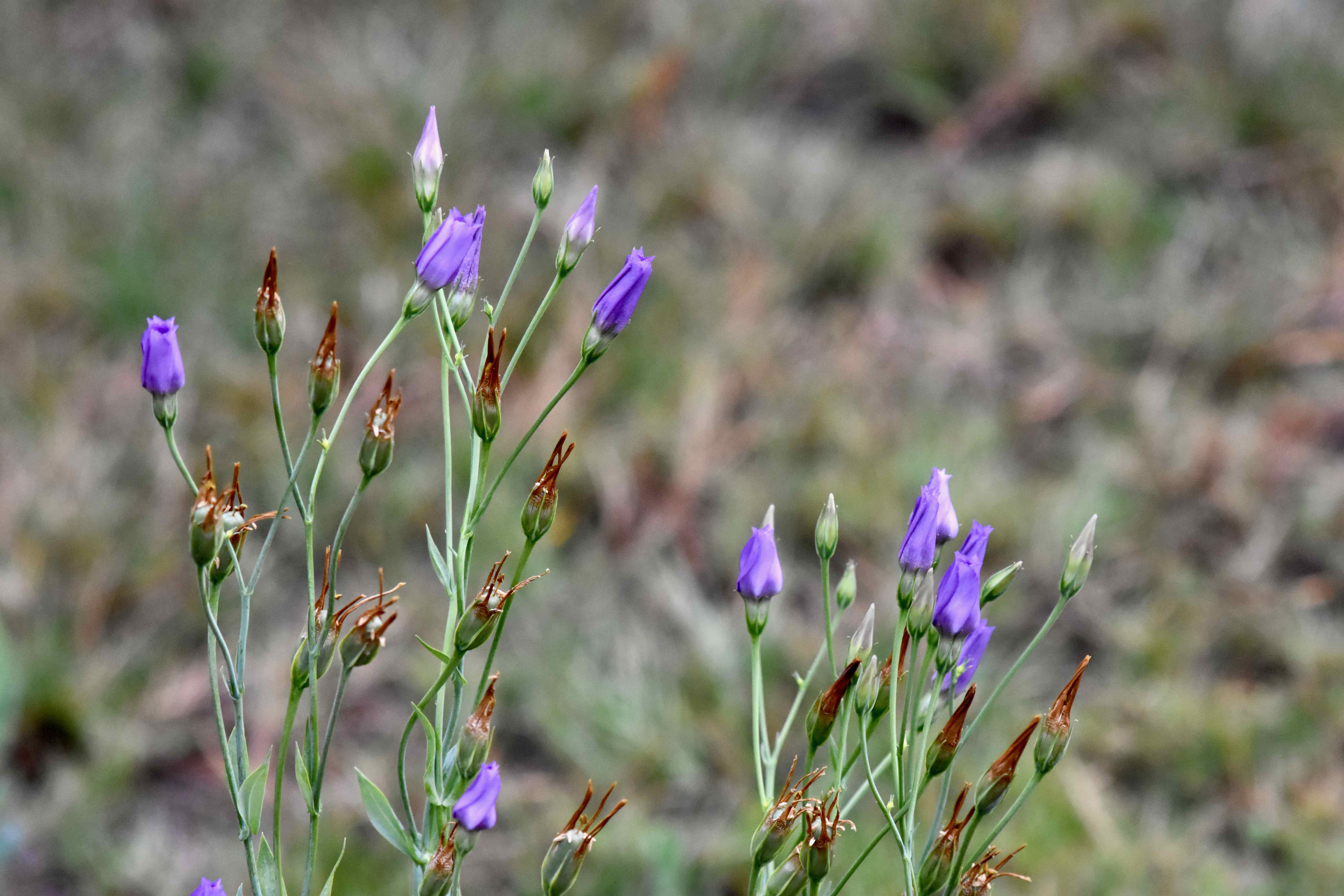
Seaside Gentian, photographed at J.W. Corbett Wildlife Management Area, North Entrance, Indiantown, Palm Beach County, in July 2015.
Sometimes you come across a wildflower so extraordinary it doesn't seem real. Has to be cultivated, you think. Seaside gentian, Eustoma exaltatum, is one of those, but it is very really. And very wild.
It is a Florida native found scattered throughout the state but mostly in the Peninsula (Escambia in the far northwest is the only county in the panhandle where it's present). It is considered common.
And despite the name, we found it growing about as far inland as you can get in Palm Beach County, in the J.W. Corbett Wildlife Management Area. In fact it's found hundreds of miles from blue water, in places like Montana and New Mexico. Seaside gentian's range also includes the Caribbean, Mexico, Central America and South America. But we've also seen it living up to its name, growing in Curry Hammock State Park, yards away from the "seaside" in the Florida Keys.
The scientific name of the plant comes from two of its most prominent features. Eustoma means large mouth, and refers to the flower's large throat. Exaltatum means tall — the plant can hit three feet and tower over other plants in the field-like habitats where's it's likely to be found.
Seaside gentian is an annual, blooming spring to fall in most places. in South Florida, it blooms year-round, peaking December to August. The bell-shaped flowers can vary in color, with the outer portion of the petals various shades of blue or purple to white. The center of the flower is always dark purple, however. The flower usually has five petals, but there can be as many as seven. The leaves are opposite along the stem, elliptical in shape but can vary in length, from less than an inch to nearly three inches.
Seaside gentian likes open, sunny and wet habitats, including wet prairies, wetlands, the edges of marshes and roadsides. It does not tolerate dry conditions well but it can take some salt. It is used in restorations, natural landscapes and wildflower gardens.
Its beauty hasn't escaped the eye of commercial growers and plant developers, particularly in Japan, where numerous cultivars have been developed for color, size and flower shape over the past century.
It has been used medicinally in the Bahamas to make a wash for some eye conditions.
Seaside gentian is a member of Gentianaceae. Common names include catchfly prairie gentian, catchfly gentian, bluebell gentian, blue marsh lily, small bluebell and marsh gentian. Members of Eustoma, which includes our guy, E. exaltatum, and two subspecies, are also called Lisianthus.
J.W. Corbett Wildlife Management Area, North Entrance



